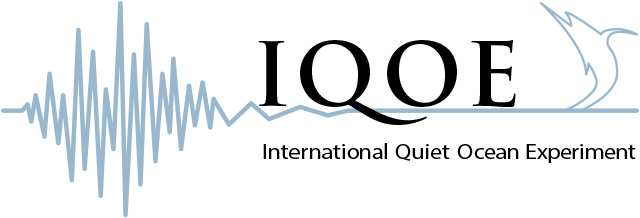Observations and experiments related to sound production and sensing by marine organisms use a variety of methods and measures, making it difficult to compare results from different locations. This working group has been developed to make bioacoustic measurements more comparable.
Co-chairs
Michele Halvorsen (USA)
Michael Ainslie (Netherlands)
Other Members (additional members are being identified)
Tomonari Akamatsu (Japan)
Rebecca Dunlop (Australia)
Dorian Houser (USA)
Robert McCauley (Australia)
Sophie Nedelec (UK)
Sander von Benda-Beckmann (Netherlands)
Paul Wensveen (Iceland)
Terms of Reference
The primary tasks of the IQOE Marine Bioacoustical Standardization Working Group are to:
- Identify any existing standards and guidelines for marine bioacoustics* (see IQOE Inventory of existing standards and guidelines relevant to marine bioacoustics)
- Identify and promote best practices from the standards and guidelines identified in Task 1;
- Identify knowledge gaps and prioritize needs for standardization from Task 1;
- Recommend development of new standards and improvements to existing ones, based upon knowledge gaps and priorities;
- Develop a two-page check-list of do's and don'ts for authors or reviewers of bioacoustics articles;
- Promote close interdisciplinary collaborations** to achieve Task 4.
*For the purposes of this IQOE WG, "marine bioacoustics" is defined as the study of sound production by marine life, the reception of sound by marine life, the effects of sound on marine life, and the interaction of sound with marine life. Specifically, the WG scope of subjects includes:
- Characterization of sound production by marine life, including but not limited to
- mechanism of sound production
- acoustic metrics, including
- frequency and bandwidth
- source level
- call rate
- Characterization of sound reception by marine life, including but not limited to
- mechanism of sound reception
- acoustic metrics, including hearing sensitivity
- Characterization of effects of sound on marine life, including but not limited to
- hearing
- physiology and tissues
- behaviour, cognition and communication
- development
- acoustic metrics, including auditory frequency weighting functions
- Characterization of acoustic scattering, absorption and refraction by marine life, including but not limited to
- scattering cross section and target strength
- absorption cross section
- Bioacoustical terminology for all the above topics
**By definition, bioacoustics implies a combination of biology and acoustics, which requires interdisciplinary collaboration and effective communication between specialist scientists and institutes. Not only the development of standards in bioacoustics but also their proper use and application requires such interdisciplinary collaboration.
